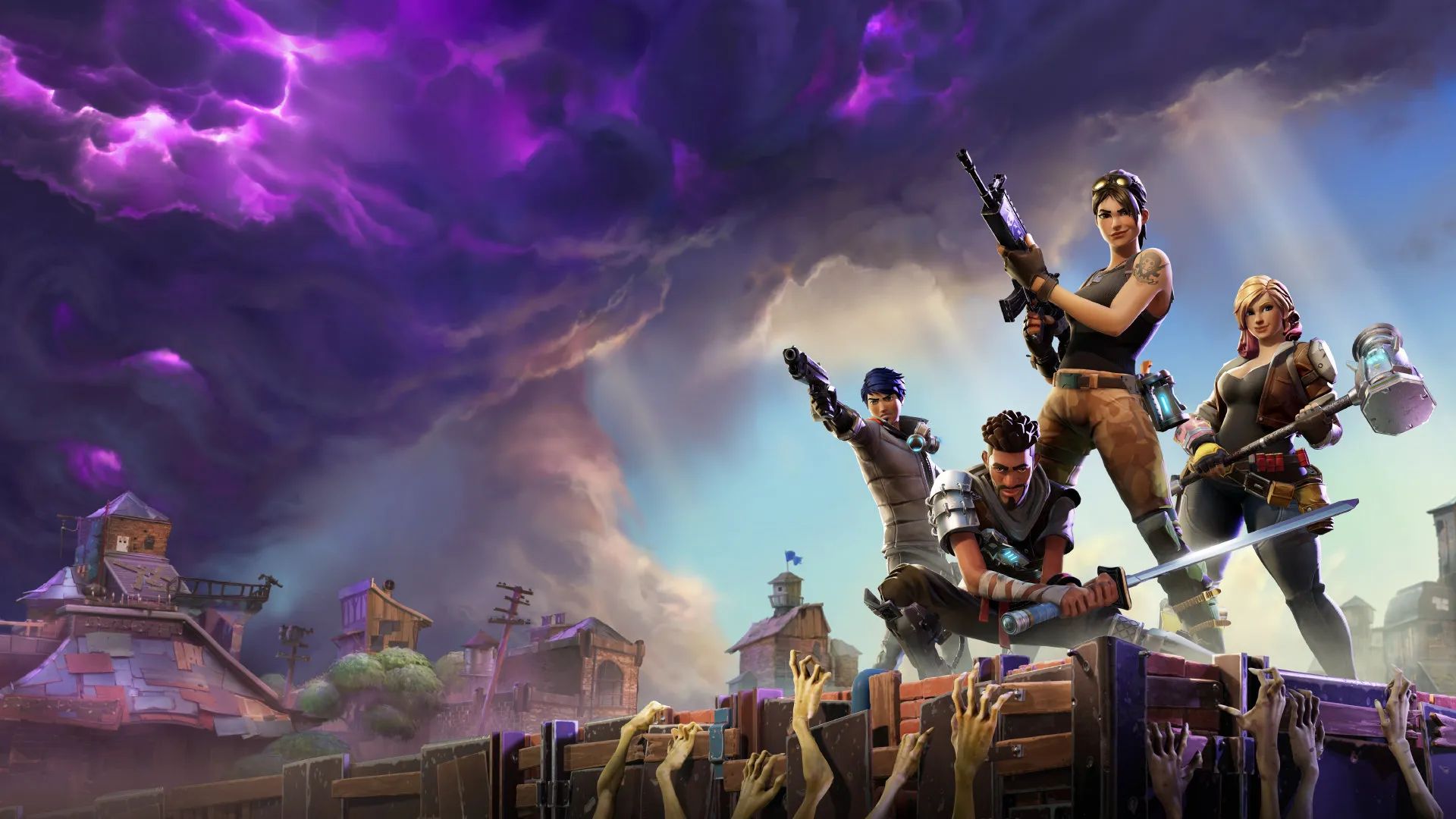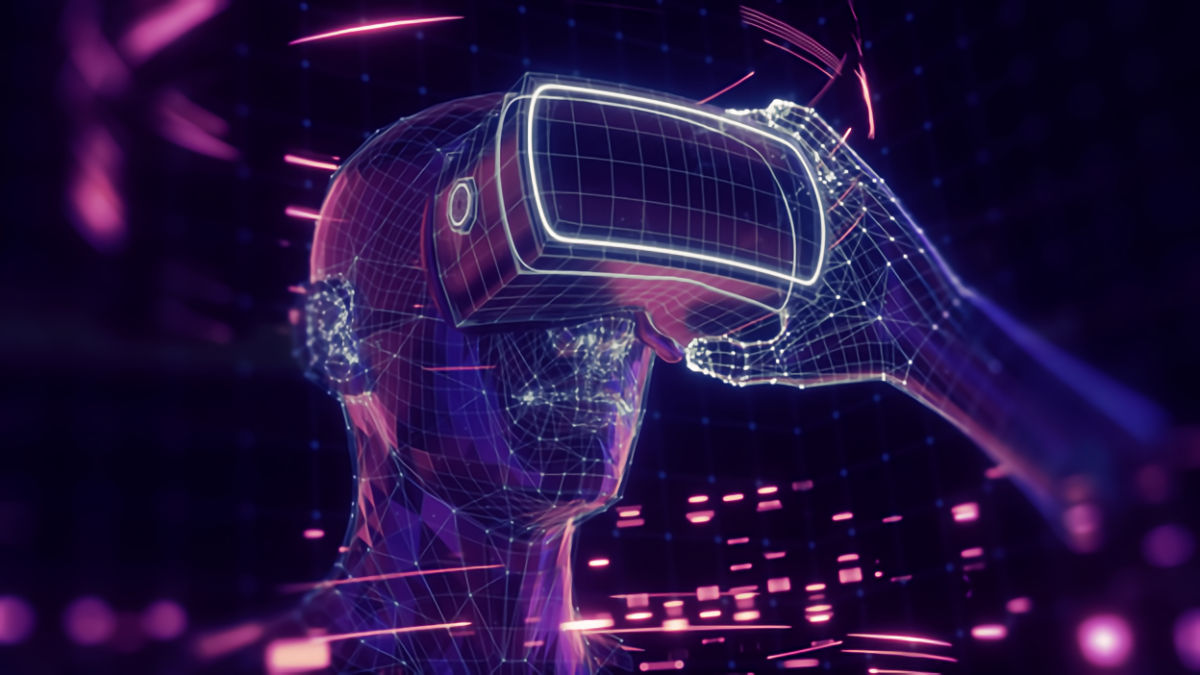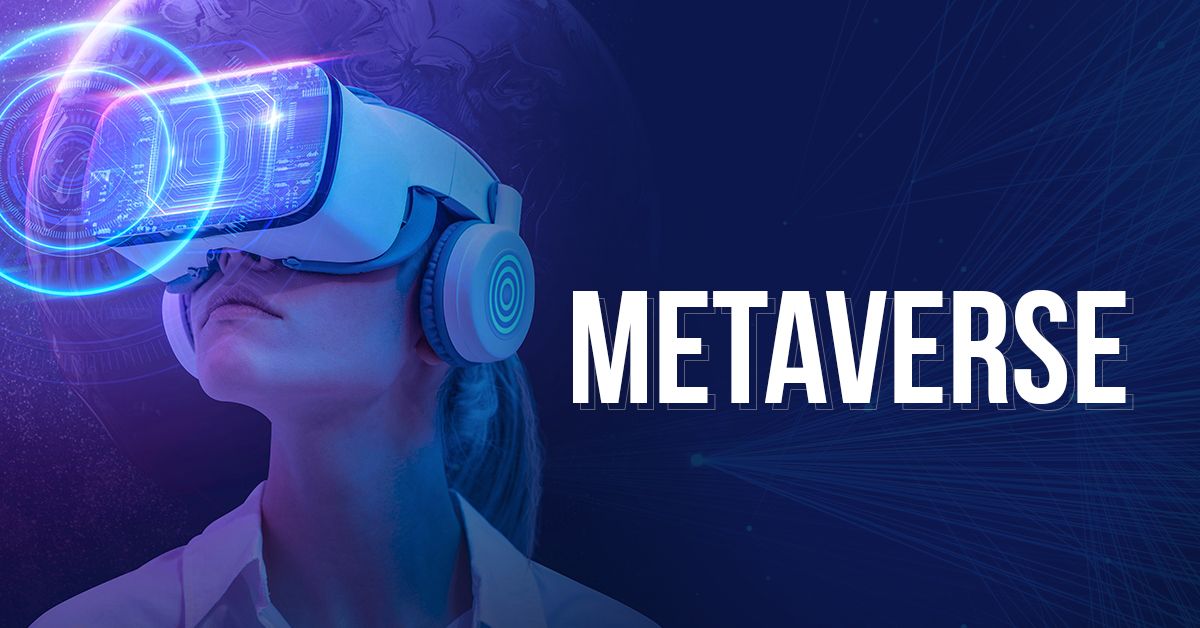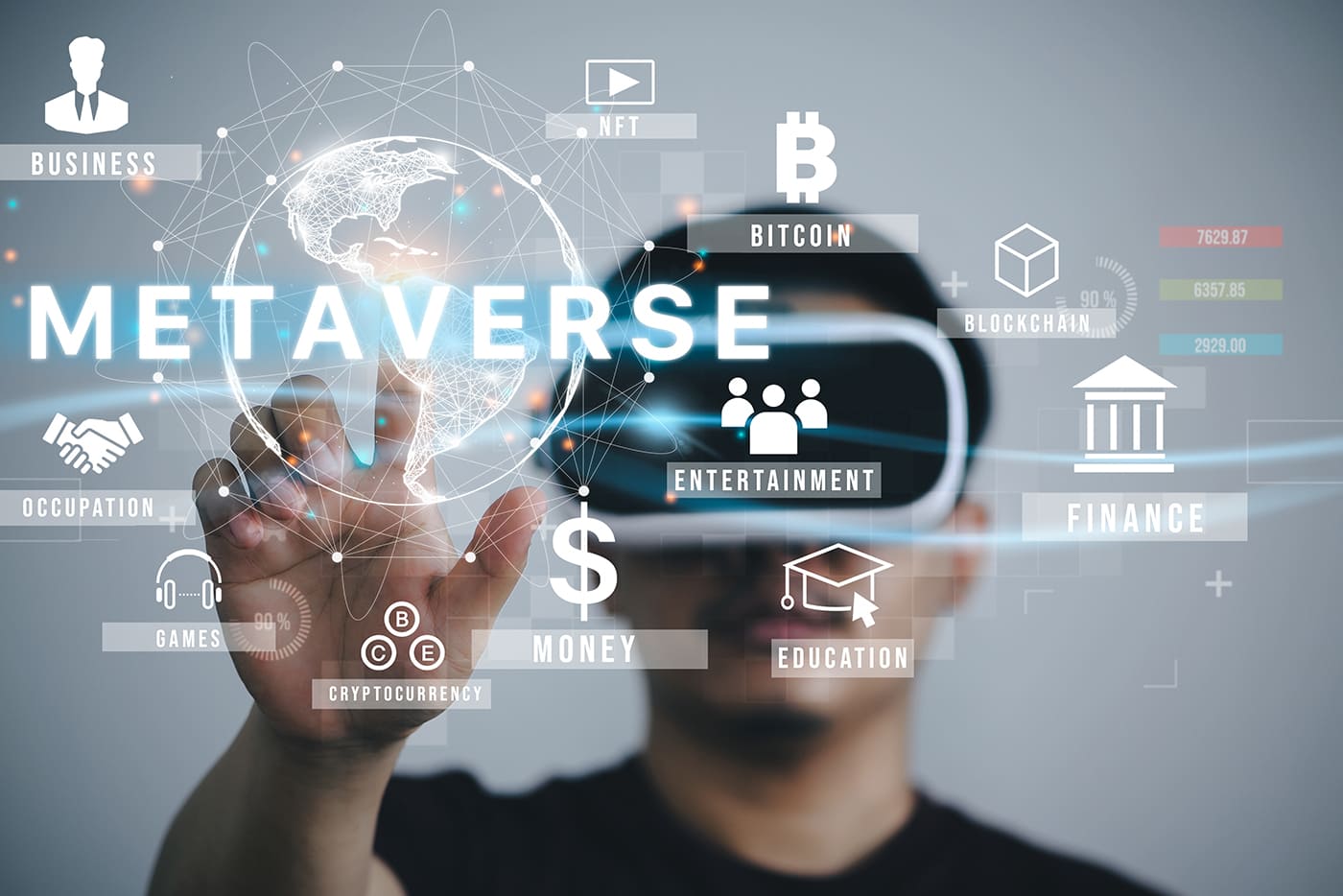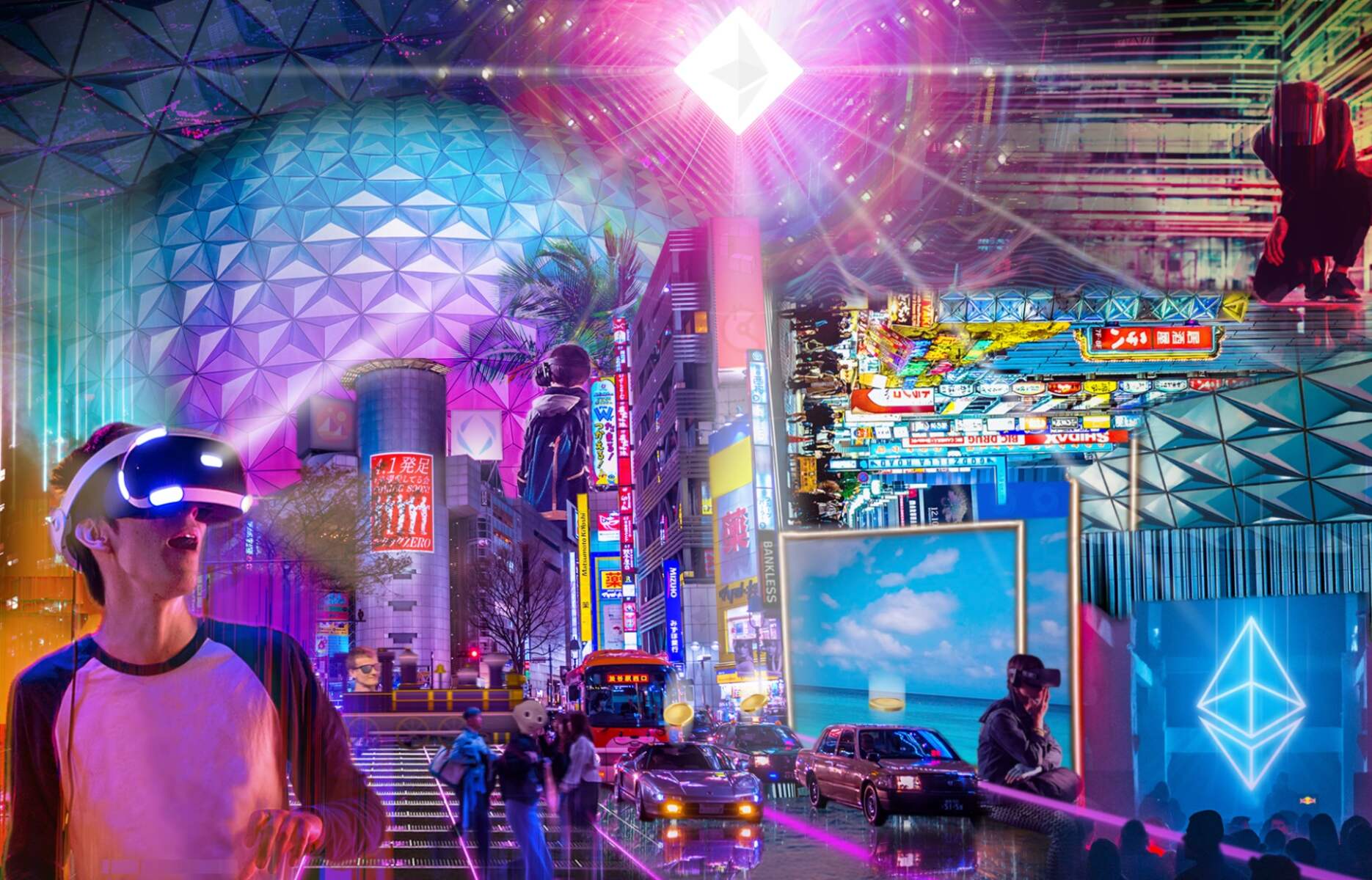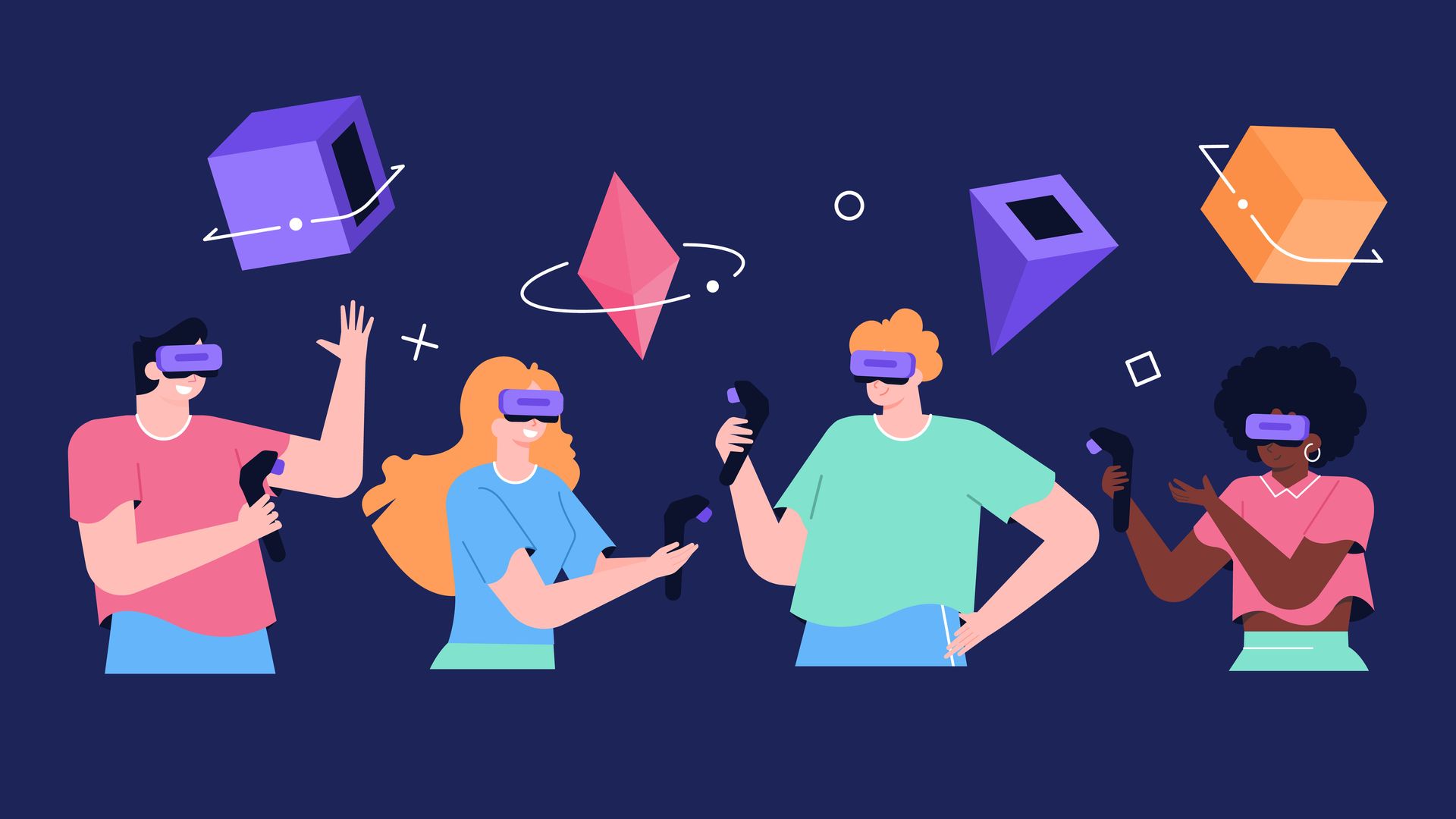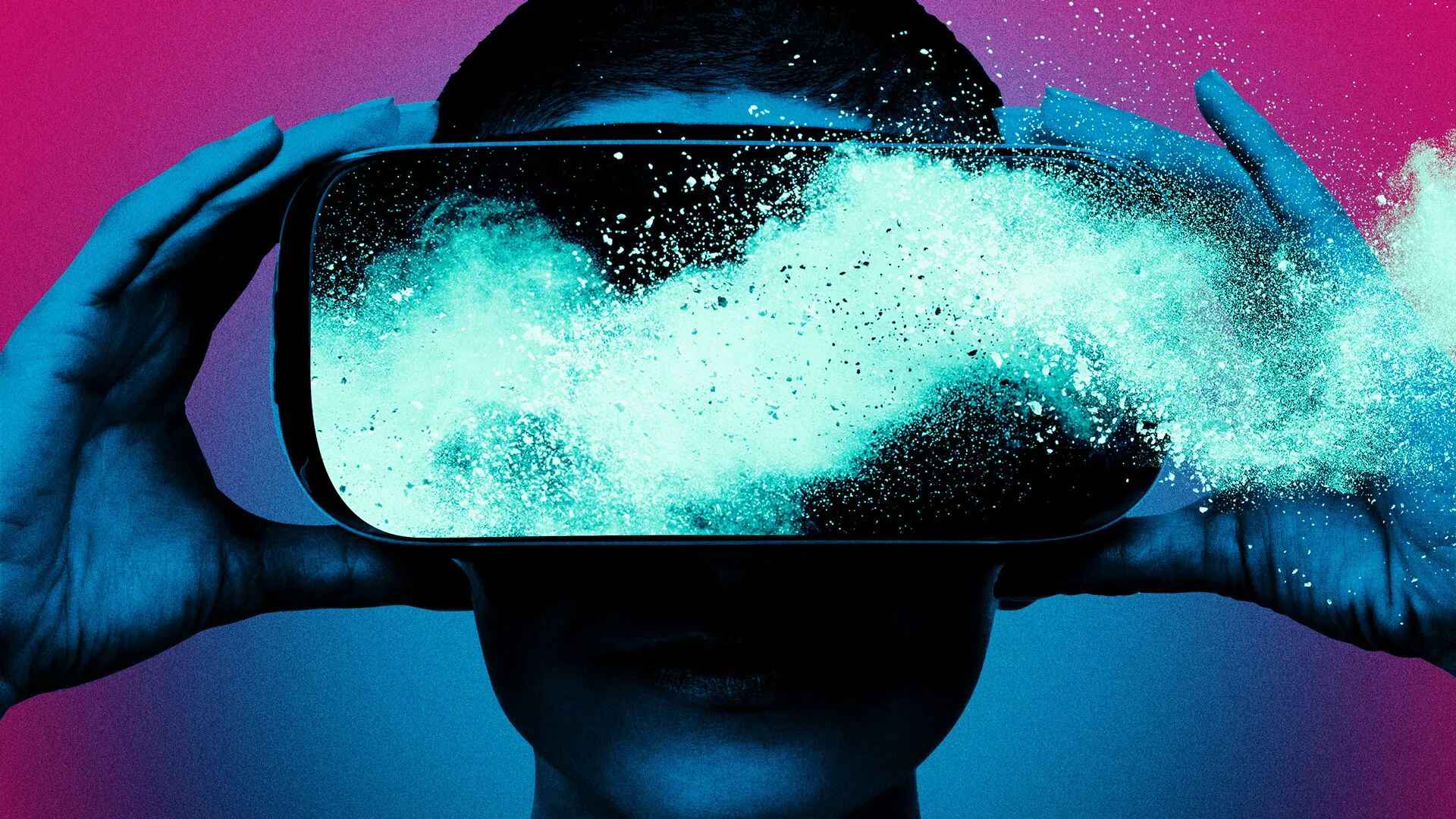Introduction
Welcome to the world of gaming, where imagination meets virtual reality. In recent years, there has been a buzz surrounding the concept of the “Metaverse.” This term, popularized in science fiction, refers to a virtual universe where people can interact with each other and their surroundings in real-time. With its boundless possibilities, the Metaverse has captured the imagination of gamers, tech enthusiasts, and entrepreneurs alike.
But what exactly is the Metaverse, and how does it apply to gaming? In simple terms, the Metaverse is an interconnected network of virtual worlds that can be accessed by users through various platforms. It offers a seamless experience where players can socialize with others, engage in activities, and explore vast digital landscapes in a shared virtual space.
Game Metaverse, specifically, is a subcategory of the Metaverse that focuses on creating immersive and interactive gaming experiences. It takes the idea of traditional video games and elevates it to a whole new level, blurring the lines between the virtual and the real. In a Game Metaverse, players not only have the freedom to explore and solve challenges but also actively contribute to the development and evolution of the virtual environment.
Game Metaverses offer a unique blend of gameplay, social interaction, and customization options. They enable players to create and personalize their avatars, participate in player-driven economies, and engage in various activities such as quests, battles, and virtual events. With the advancement of technology, the boundaries of what is possible in a Game Metaverse are expanding every day.
In this article, we will explore the key features of a Game Metaverse, delve into examples of existing Game Metaverses, discuss their potential, and highlight the challenges and considerations involved in building these immersive virtual worlds. So grab your virtual gear and get ready to dive into the exciting world of Game Metaverses!
What is the Metaverse?
The Metaverse is a concept that has gained significant attention in recent years, fueled by advancements in technology and the growing popularity of virtual reality. Coined by the science fiction writer Neal Stephenson in his novel “Snow Crash,” the Metaverse refers to a virtual universe where users can interact with each other and the virtual environment in real-time.
At its core, the Metaverse is an interconnected network of virtual worlds that goes beyond the limitations of individual games or platforms. It creates a seamless and immersive experience where users can move freely between different virtual spaces, regardless of the underlying technology or game engine. The vision is to have a single, unified virtual universe that can be accessed by anyone, anytime, from anywhere.
The Metaverse is not just limited to gaming. It is a digital realm that encompasses a wide range of activities and experiences, including entertainment, education, commerce, communication, and more. Imagine attending virtual concerts, exploring historical landmarks, attending virtual classrooms, or even running a virtual business, all within the same interconnected universe.
One of the defining characteristics of the Metaverse is its social nature. Unlike traditional single-player or even multiplayer games, the Metaverse fosters collaboration, social interaction, and community building. Users can communicate, form groups, and engage in shared activities with others, creating a sense of presence and connection.
Another key aspect of the Metaverse is its persistence. The virtual universe continues to exist and evolve regardless of whether users are actively engaged or not. This means that changes made by one user can have an impact on the experience of others, creating a dynamic and ever-changing environment.
The Metaverse is not a new concept, but recent technological advancements have brought us closer to realizing this vision. With the advent of virtual reality, augmented reality, blockchain technology, and other innovations, the possibilities for creating a fully immersive and interconnected Metaverse are becoming more tangible.
In the next sections, we will specifically focus on Game Metaverses, a subset of the Metaverse that centers around gaming experiences. We will explore the unique features, examples, potential, and challenges associated with creating these immersive virtual worlds.
The Concept of a Game Metaverse
Game Metaverse takes the concept of the Metaverse and applies it specifically to the realm of gaming. It is a virtual universe where players can interact, explore, and engage in various game-related activities in a shared digital space.
Unlike traditional video games that are confined to specific platforms or game worlds, a Game Metaverse offers a seamless and interconnected gaming experience. Players can move freely between different games, virtual environments, and genres, maintaining their progress, achievements, and social connections across the entire Metaverse.
The idea behind a Game Metaverse is to create a dynamic and evolving gaming ecosystem that transcends the boundaries of individual games. Players have the freedom to explore a vast and immersive virtual world, interact with other players, and participate in a myriad of activities ranging from quests, battles, and puzzles to social events, trading, and customization.
Central to the concept of a Game Metaverse is the notion of player agency. In a traditional video game, players are usually limited to pre-determined storylines and objectives. However, in a Game Metaverse, players can actively shape and contribute to the development of the virtual environment. They can create and customize their own virtual spaces, design unique items or characters, and even contribute to the narrative and gameplay through user-generated content.
Furthermore, a Game Metaverse often incorporates player-driven economies, where virtual goods and currencies hold real value. This allows players to participate in trading and economic activities, establishing a thriving marketplace within the virtual universe. In some cases, players can even monetize their in-game accomplishments and creations, turning their gaming experiences into lucrative opportunities.
One of the key advantages of a Game Metaverse is its potential for social interaction and community building. Players can form alliances, join guilds, or engage in multiplayer activities, fostering a sense of camaraderie and teamwork. The social aspect of a Game Metaverse not only enhances the immersive experience but also opens up opportunities for collaboration, competition, and shared experiences among players.
As technology continues to advance, the concept of a Game Metaverse holds immense potential for providing players with unprecedented levels of immersion, freedom, and creativity. It enables game developers to break free from the constraints of traditional game design and allows players to embark on endless gaming adventures within a fully connected virtual universe.
In the following sections, we will explore some notable examples of existing Game Metaverses, discuss their key features, and evaluate the potential impact of Game Metaverses on the gaming industry and beyond.
Key Features of a Game Metaverse
A Game Metaverse offers several key features that set it apart from traditional video games and create a unique and immersive gaming experience. These features not only enhance gameplay but also foster community interaction and creativity. Let’s explore some of the key aspects of a Game Metaverse:
- Seamless Interconnectedness: A Game Metaverse seamlessly connects different game worlds, virtual environments, and platforms. Players can move fluidly between various games and experiences, maintaining their progress, achievements, and social connections throughout the Metaverse.
- Player Agency and Creativity: In a Game Metaverse, players have the power to shape their gaming experience. They can create and customize their avatars, design unique gameplay elements, and even contribute to the virtual universe through user-generated content. This level of player agency fosters creativity and allows for a highly personalized gaming experience.
- Player-Driven Economies: A Game Metaverse often incorporates player-driven economies, where virtual goods and currencies hold real value. Players can engage in trading, buying, and selling virtual assets, creating a vibrant marketplace within the virtual universe. This economic aspect adds depth to the gameplay and provides opportunities for players to profit from their in-game activities.
- Shared Social Environment: The social aspect of a Game Metaverse is crucial in creating a thriving gaming community. Players can interact with others, form alliances, join guilds, and participate in multiplayer activities. This shared social environment fosters cooperation, competition, and community building, making the gaming experience more engaging and immersive.
- Persistent and Evolving World: Unlike traditional video games that are static, a Game Metaverse is a persistent and evolving world. Changes made by players have a lasting impact on the virtual universe, shaping its development and creating a dynamic gameplay experience. The evolving world ensures that there is always something new to discover and explore.
- Cross-Platform Compatibility: A Game Metaverse breaks the barriers of individual gaming platforms. It allows players to engage in gameplay across multiple devices and platforms, ensuring accessibility and inclusivity. Whether playing on a PC, console, or even a mobile device, players can seamlessly connect and enjoy the virtual universe.
These key features of a Game Metaverse combine to create a truly immersive and interconnected gaming experience. They offer players unprecedented freedom, creativity, and opportunities for social interaction. Additionally, by incorporating player-driven economies and user-generated content, Game Metaverses provide avenues for players to shape the virtual universe and even monetize their in-game accomplishments.
In the next section, we will explore some notable examples of existing Game Metaverses and shed light on their unique aspects and contributions to the gaming industry.
Examples of Game Metaverses
Game Metaverses have gained significant popularity and have become a thriving segment in the gaming industry. Several notable examples exist today, each offering unique experiences and pushing the boundaries of what is possible in virtual gaming. Let’s explore some of these Game Metaverses:
- Roblox: Roblox is a massive multiplayer online platform that allows users to create and play games within its virtual world. It boasts millions of user-generated games, providing a vast array of experiences for players. Roblox not only offers a platform for game creation but also incorporates social features, in-game economies, and a robust developer community.
- Minecraft: Minecraft, known for its block-based world-building gameplay, has evolved into a Game Metaverse with its “Minecraft Marketplace.” This platform allows players to buy and sell user-generated content, including skins, texture packs, and custom maps. Minecraft has also introduced cross-platform compatibility, enabling players on various devices to connect and collaborate within the game.
- Fortnite: Fortnite, a battle royale game developed by Epic Games, has expanded beyond its traditional gameplay to become an immersive Game Metaverse. Its in-game events, collaborations with other franchises, and creative mode that allows players to design and share their own worlds contribute to the development of a dynamic and evolving virtual universe.
- Decentraland: Decentraland is a blockchain-based virtual world that operates on the Ethereum network. It allows users to buy, sell, and trade virtual assets using its native cryptocurrency. Decentraland gives users complete ownership of the digital land and offers opportunities for creativity, social interaction, and economic activities within its decentralized virtual universe.
- Second Life: Second Life, launched in 2003, is one of the longest-running virtual worlds that can be considered a precursor to modern Game Metaverses. It offers users the ability to create avatars, explore a vast virtual world, and engage in activities such as socializing, building, and commerce. Second Life has a vibrant economy driven by user-generated content and virtual businesses.
These examples showcase the diversity and potential of Game Metaverses. Each one offers a unique set of features, gameplay mechanics, and opportunities for creativity and social interaction. They underscore the immense possibilities that Game Metaverses offer to both game developers and players.
It is worth noting that the concept of a Game Metaverse is still evolving, and new initiatives and innovations continue to emerge in the gaming industry. The examples above are just a glimpse of the existing Game Metaverses, and future advancements will likely bring even more immersive and interconnected gaming experiences.
In the following section, we will explore the potential impact of Game Metaverses on the gaming industry and beyond, as well as the challenges and considerations involved in building these virtual worlds.
The Potential of Game Metaverses
Game Metaverses have the potential to revolutionize the gaming industry and have a profound impact on various aspects of our lives. Their immersive and interconnected nature opens up exciting possibilities for players, developers, and even other industries. Let’s explore the potential of Game Metaverses:
1. Enhanced Gaming Experience: Game Metaverses offer a level of immersion and freedom that goes beyond conventional video games. Players can explore expansive virtual worlds, interact with others, and shape their gaming experiences. The ability to seamlessly move between different games and genres within the Metaverse creates a dynamic and personalized gaming experience.
2. Creative Expression and User-Generated Content: Game Metaverses empower players to unleash their creativity and contribute to the virtual universe. User-generated content not only enhances the gameplay but also enables players to share their creations with others. This fosters a vibrant and collaborative community, allowing players to showcase their talents and potentially even monetize their creations.
3. Socialization and Community Building: Game Metaverses offer a space for players to connect, socialize, and form communities. The shared virtual environment facilitates collaboration, competition, and group activities. This social aspect creates a sense of belonging and fosters friendships and alliances among players from around the world.
4. Economic Opportunities: The integration of player-driven economies within Game Metaverses opens up new avenues for economic activities and entrepreneurship. Players can trade virtual assets, participate in in-game economies, and even earn real-world income through various monetization models. This economic dimension creates a unique ecosystem within the virtual universe.
5. Education and Skill Development: Game Metaverses have the potential to be powerful educational tools. They can provide immersive learning experiences, simulations, and interactive environments for skill development. Virtual classrooms, historical reenactments, and scientific simulations are just a few examples of how Game Metaverses can shape the future of education and training.
6. Cross-Industry Integration: Game Metaverses have the potential to extend beyond the gaming industry. They can be integrated with various sectors such as entertainment, fashion, real estate, and healthcare. Virtual concerts, virtual fashion shows, virtual property ownership, and virtual healthcare simulations are just a few examples of how Game Metaverses can intersect with other industries.
These are just a few examples of the potential impact and possibilities offered by Game Metaverses. As technology continues to advance and creative minds push the boundaries of virtual experiences, the potential of Game Metaverses will only continue to expand.
However, it is important to recognize that building and maintaining a Game Metaverse comes with its own set of challenges and considerations. In the next section, we will explore some of these challenges and delve into the complexities involved in creating these immersive virtual worlds.
Challenges and Considerations in Building Game Metaverses
Building a game metaverse is a complex and ambitious endeavor that presents various challenges and considerations for developers. While the potential benefits of game metaverses are enticing, it is essential to address these challenges to ensure a successful and sustainable virtual ecosystem. Let’s explore some of the key challenges and considerations in building game metaverses:
1. Technical Infrastructure: Developing a game metaverse requires robust technical infrastructure to support seamless gameplay, multiplayer interactions, and the storage of vast amounts of user-generated content. Scaling the infrastructure to accommodate a growing user base can be a significant undertaking, requiring advanced server architecture, reliable networking protocols, and efficient data management systems.
2. Content Moderation and Safety: With the open and collaborative nature of game metaverses, ensuring the safety and well-being of players becomes crucial. Content moderation and effective community management are essential to prevent harassment, abuse, and inappropriate behavior within the metaverse. Developers must implement comprehensive moderation systems, reporting mechanisms, and community guidelines to maintain a positive and inclusive environment.
3. Intellectual Property Rights: In game metaverses where users can create and monetize their own content, intellectual property rights enforcement becomes a challenge. Balancing user creativity and ownership rights with copyright and intellectual property protection requires a well-defined legal framework and robust content recognition systems to prevent unauthorized use of copyrighted material.
4. Fairness and Balancing: In multiplayer game metaverses, ensuring fair gameplay and balancing can be challenging. Developers must implement effective matchmaking systems, anti-cheating measures, and fair reward distribution to provide an enjoyable and equitable gaming experience for all players. Balancing player progression and skill levels while maintaining a sense of challenge and achievement is a constant challenge in game metaverse design.
5. Accessibility and Inclusivity: Creating game metaverses that are accessible to a wide range of players, including those with disabilities, is an important consideration. Developers must strive to ensure compatibility with assistive technologies, provide customizable interfaces, and address accessibility guidelines to make the metaverse experience enjoyable and inclusive for everyone.
6. Evolving Technologies and Standards: The landscape of technology and gaming standards is constantly evolving. Game metaverse developers must stay up-to-date with emerging technologies, hardware advancements, and industry standardization to ensure compatibility, performance optimization, and future-proofing of the metaverse ecosystem.
7. Ethical and Privacy Concerns: As game metaverses become more immersive and interconnected, privacy and ethical considerations come to the forefront. Developers must prioritize user privacy, inform users about data collection and usage, and ensure transparency in the metaverse ecosystem. Additionally, ethical concerns such as data security, consent, and the responsible use of user-generated content must be addressed to maintain user trust.
Addressing these challenges and considerations requires careful planning, collaboration, and ongoing effort from game developers and industry stakeholders. By recognizing and proactively addressing these challenges, game metaverses can offer safe, engaging, and innovative virtual experiences for gamers worldwide.
With the potential for remarkable creativity, social interaction, and economic opportunities, game metaverses hold significant promise for the future of gaming and beyond. In the following sections, we will conclude our exploration by summarizing the key points and highlighting the potential future developments in this exciting space.
Conclusion
The concept of game metaverses represents a thrilling evolution in the gaming industry, offering immersive, interconnected, and socially-driven virtual experiences. These virtual universes go beyond traditional video games, providing players with unprecedented levels of freedom, creativity, and social interaction.
Game metaverses leverage advanced technologies, such as virtual reality, augmented reality, and blockchain, to create virtual ecosystems where players can explore, interact, and contribute to the development of the virtual universe. With seamless interconnectedness, player agency, shared social environments, and player-driven economies, game metaverses have the potential to revolutionize the way we play, socialize, and even conduct business.
Notable examples of game metaverses, such as Roblox, Minecraft, Fortnite, Decentraland, and Second Life, demonstrate the immense diversity and potential within this virtual realm. They showcase the power of user-generated content, socialization, and economic opportunities within the metaverse.
However, building game metaverses comes with its own set of challenges and considerations, including technical infrastructure, content moderation, intellectual property rights, fairness, accessibility, evolving technologies, and ethical concerns. Addressing these challenges is crucial to ensure the creation of safe, enjoyable, and inclusive virtual spaces.
As the gaming industry continues to innovate and technology advances, the potential of game metaverses will only expand further. Collaboration between developers, industry stakeholders, and the gaming community will be vital in shaping the future of game metaverses and unlocking their full potential.
In conclusion, game metaverses represent an exciting frontier in gaming, offering a new way to play, create, connect, and explore vast digital realms. With the potential for enhanced gaming experiences, creative expression, economic opportunities, and cross-industry integration, game metaverses are poised to redefine the future of entertainment, education, and social interaction.







